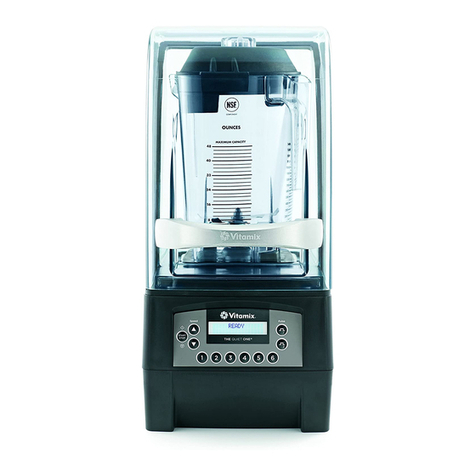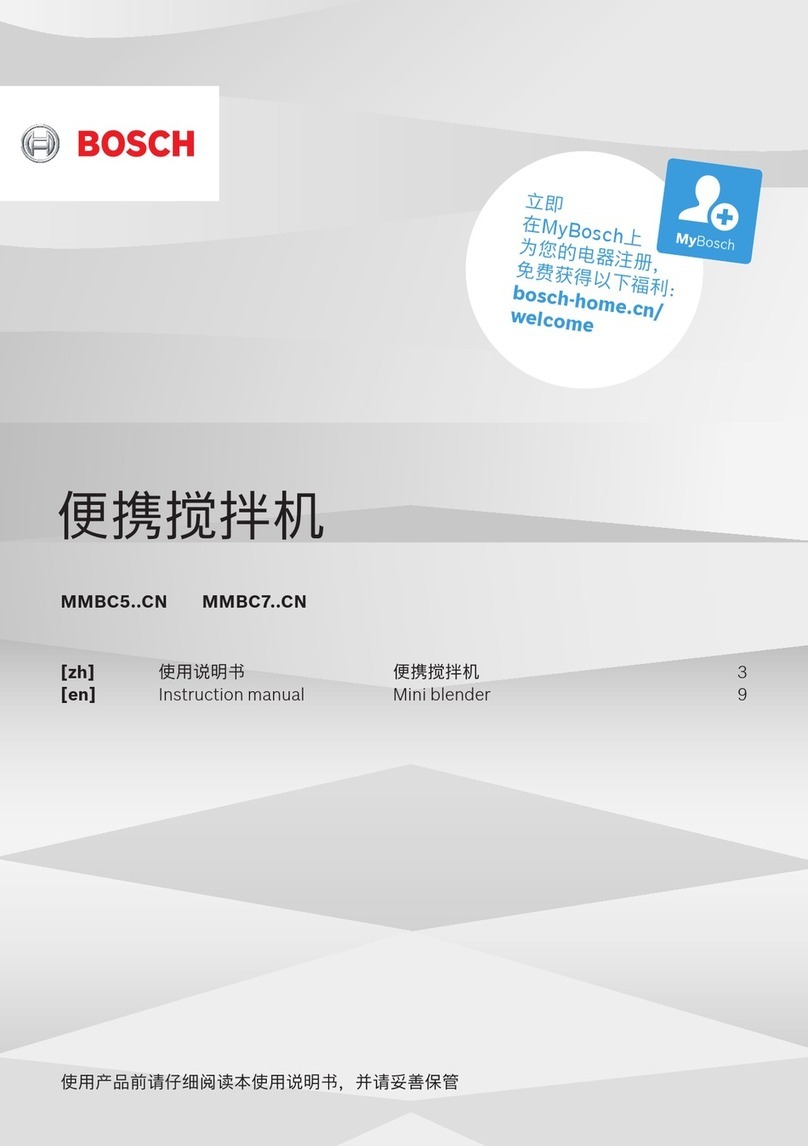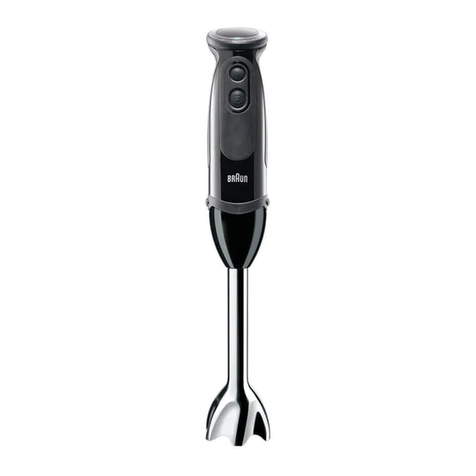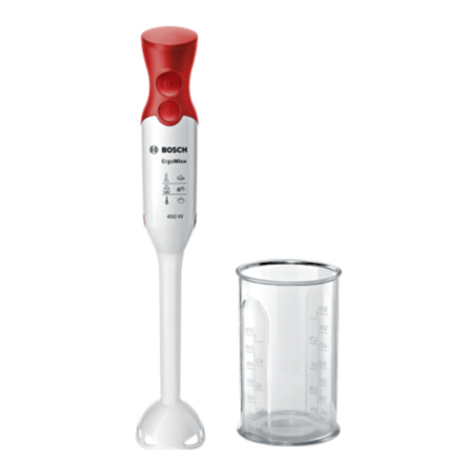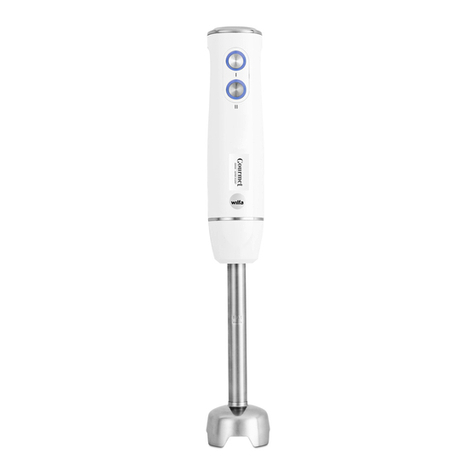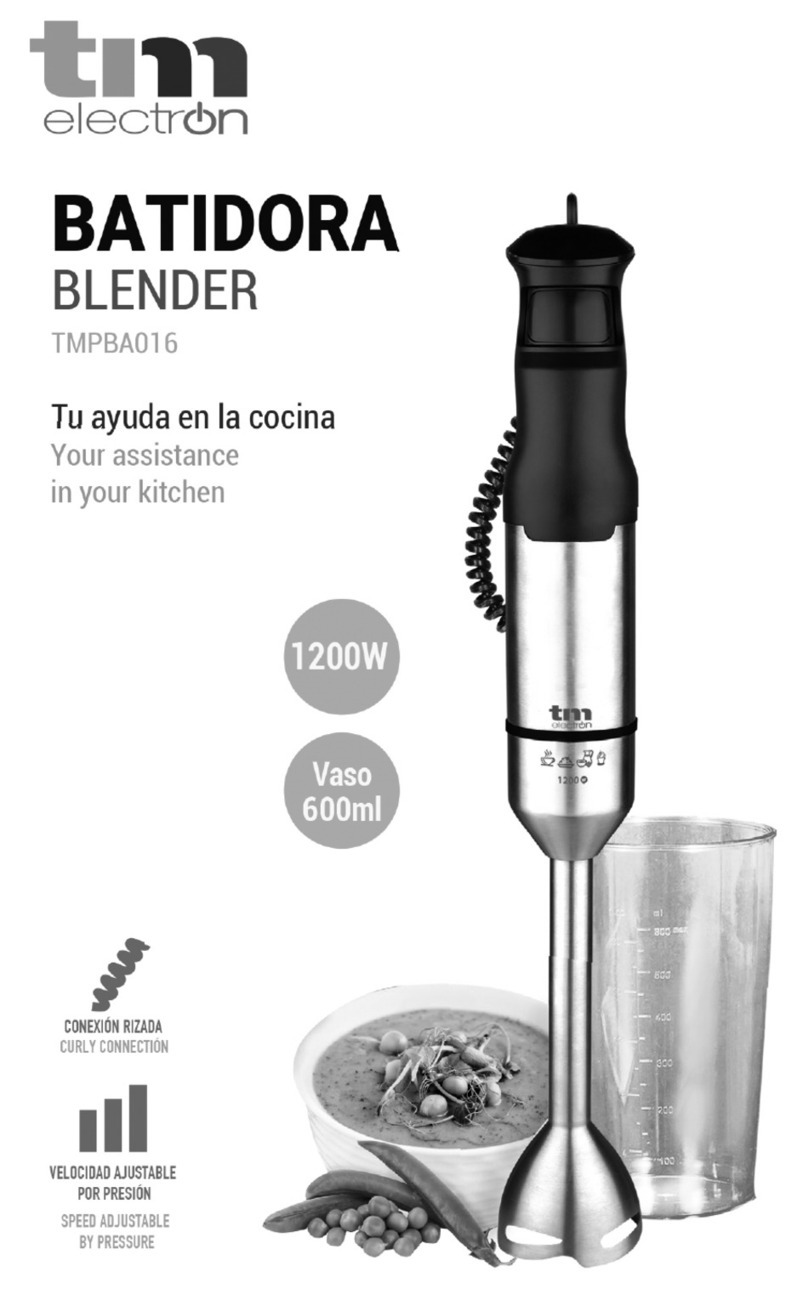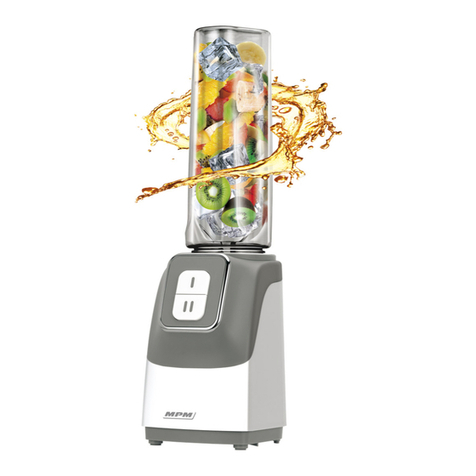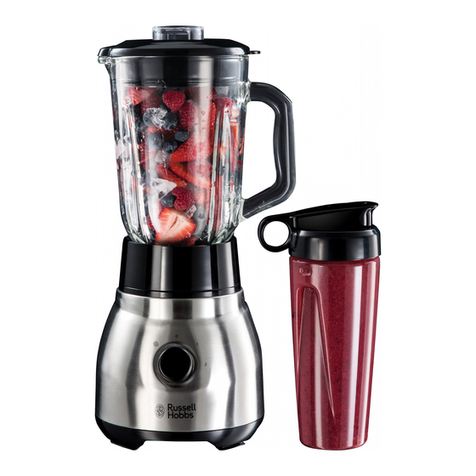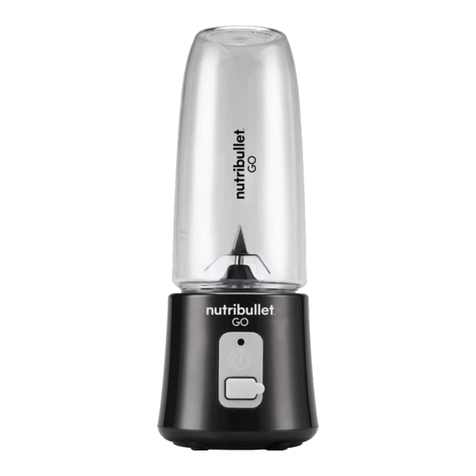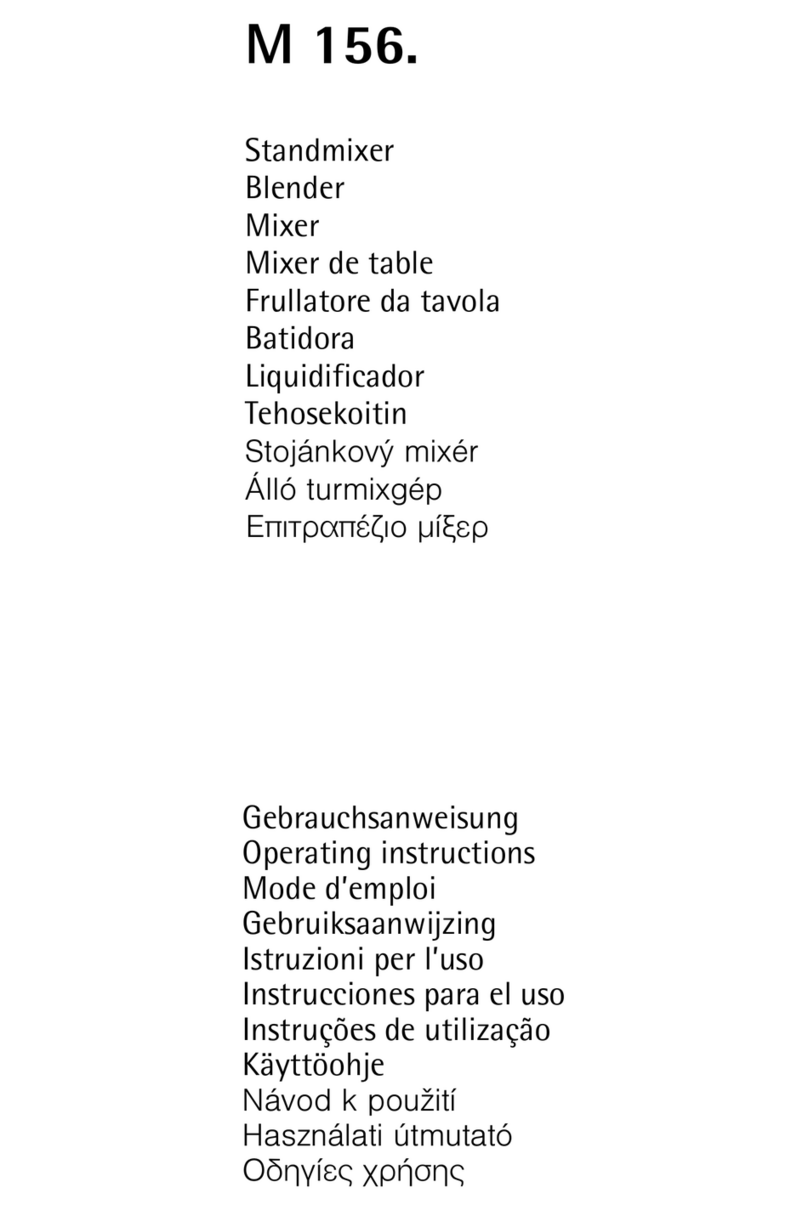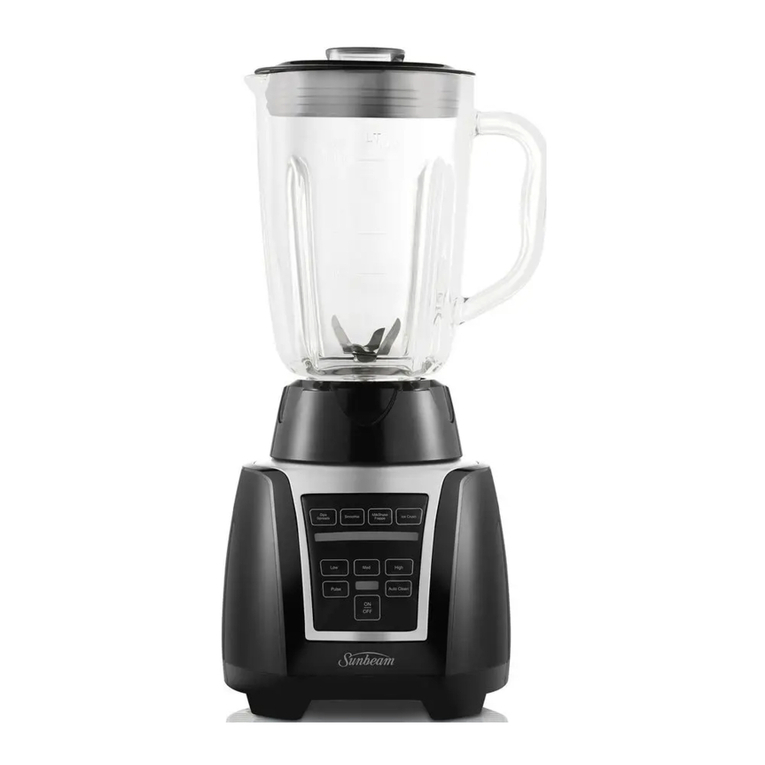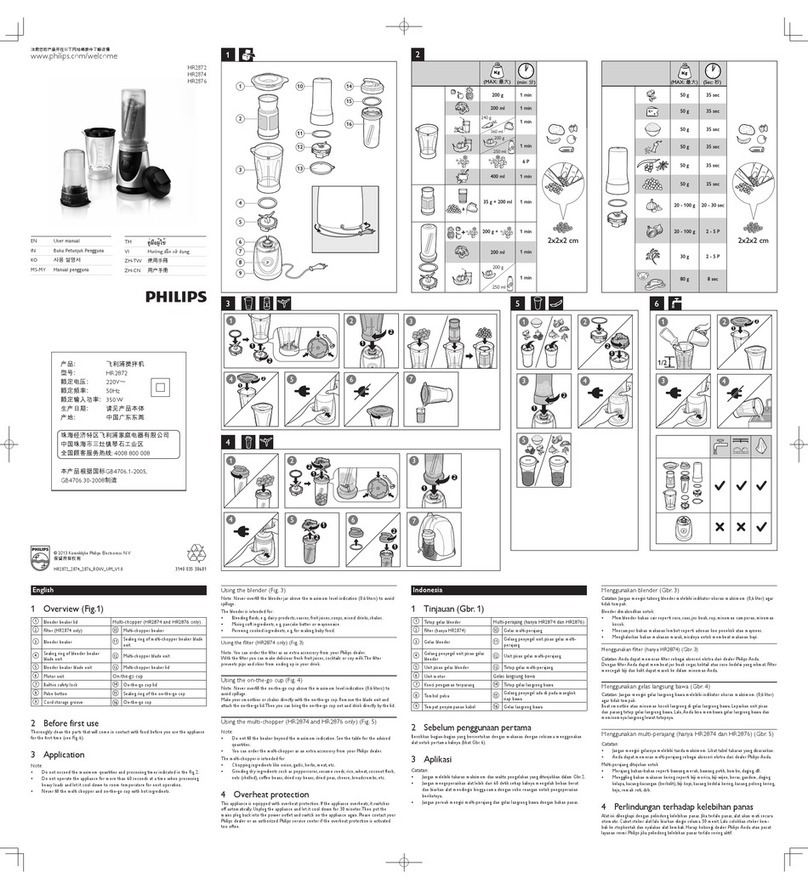Sterling A0567659 Specification sheet


Page 2 of 118 SGB Batch Blender with Mitsubishi Controller
Model # Serial #
Write down your Blender ________________ ________________
serial numbers here _____________ _____________
for future reference ________________ ________________
________________ ________________
________________ ________________
________________ ________________
________________ ________________
________________ ________________
________________ ________________
________________ ________________
Sterling is committed to a continuing program of product improvement.
Specifications, appearance, and dimensions described in this manual
are subject to change without notice.
© Copyright Sterling 2003
All rights reserved. Revision: NEW
Part No. A0567659 Bulletin No. SM1-605M

Please note that our address and phone information has changed.
Please reference this page for updated contact information.
These manuals are obsolete and are provided only for their technical information, data and capacities.
Portions of these manuals detailing procedures or precautions in the operation, inspection, maintenance
and repair of the products may be inadequate, inaccurate, and/or incomplete and shouldn’t be relied
upon. Please contact the ACS Group for more current information about these manuals and their
warnings and precautions.
Parts and Service Department
The ACS Customer Service Group will provide your company with genuine OEM quality parts manufactured to engineering
design specifications, which will maximize your equipment’s performance and efficiency. To assist in expediting your phone
or fax order, please have the model and serial number of your unit when you contact us. A customer replacement parts list
is included in this manual for your convenience. ACS welcomes inquiries on all your parts needs and is dedicated to
providing excellent customer service.
For immediate assistance, please contact:
•North, Central and South America, 8am – 5pm CST +1 (800) 483-3919 for drying, conveying, heating and cooling
and automation. For size reduction: +1 (800) 229-2919.
North America, emergencies after 5pm CST (847) 439-5855
•Mexico, Central & South America
Email: acslatinamericacustserv@corpemail.com
•Europe, Middle East & Africa +48 22 390 9720
•India +91 21 35329112
•Asia/Australia +86 512 8717 1919
Email: [email protected]
Sales and Contracting Department
Our products are sold by a worldwide network of independent sales representatives. Contact our Sales Department for the
name of the sales representative nearest you.
Let us install your system. The Contract Department offers any or all of these services: project planning; system packages
including drawings; equipment, labor, and construction materials; and union or non-union installations.
For assistance with your sales or system contracting needs please Call:
North, Central and South America +1 (262)641-8600 or +1 (847) 273-7700 Monday–Friday, 8am–5pm CST
Europe/Middle East/Africa +48 22 390 9720
India +91 21 35329112
Asia/Australia +86 512 8717 1919
Facilities:
ACS offers facilities around the world to service you no matter where you are located. For more information, please visit us at
www.acscorporate.com
United States:
ACS Schaumburg – Corporate Offices
1100 E. Woodfield Road
Suite 588
Schaumburg, IL 60173
Phone: + 1 847 273 7700
Fax: + 1 847 273 7804
ACS New Berlin – Manufacturing Facility
2900 S. 160th Street
New Berlin, WI 53151
Phone : +1 262 641 8600
Fax: + 1 262 641 8653
Asia/Australia:
ACS Suzhou
109 Xingpu Road SIP
Suzhou, China 215126
Phone: + 86 8717 1919
Fax: +86 512 8717 1916
Europe/Middle East/Africa:
ACS Warsaw
Ul. Działkowa 115
02-234 Warszawa
Phone: + 48 22 390 9720
Fax: +48 22 390 9724
India
ACS India
Gat No. 191/1, Sandbhor Complex
Mhalunge, Chakan, Tal Khed,
Dist. Pune 410501, India
Phone: +91 21 35329112
Fax: + 91 20 40147576

Please note that our address and phone information has changed.
Please reference this page for updated contact information.
These manuals are obsolete and are provided only for their technical information, data and capacities.
Portions of these manuals detailing procedures or precautions in the operation, inspection, maintenance
and repair of the products may be inadequate, inaccurate, and/or incomplete and shouldn’t be relied
upon. Please contact the ACS Group for more current information about these manuals and their
warnings and precautions.
Parts and Service Department
The ACS Customer Service Group will provide your company with genuine OEM quality parts manufactured to engineering
design specifications, which will maximize your equipment’s performance and efficiency. To assist in expediting your phone
or fax order, please have the model and serial number of your unit when you contact us. A customer replacement parts list
is included in this manual for your convenience. ACS welcomes inquiries on all your parts needs and is dedicated to
providing excellent customer service.
For immediate assistance, please contact:
•North, Central and South America, 8am – 5pm CST +1 (800) 483-3919 for drying, conveying, heating and cooling
and automation. For size reduction: +1 (800) 229-2919.
North America, emergencies after 5pm CST (847) 439-5855
•Mexico, Central & South America
Email: acslatinamericacustserv@corpemail.com
•Europe, Middle East & Africa +48 22 390 9720
•India +91 21 35329112
•Asia/Australia +86 512 8717 1919
Email: [email protected]
Sales and Contracting Department
Our products are sold by a worldwide network of independent sales representatives. Contact our Sales Department for the
name of the sales representative nearest you.
Let us install your system. The Contract Department offers any or all of these services: project planning; system packages
including drawings; equipment, labor, and construction materials; and union or non-union installations.
For assistance with your sales or system contracting needs please Call:
North, Central and South America +1 (262)641-8600 or +1 (847) 273-7700 Monday–Friday, 8am–5pm CST
Europe/Middle East/Africa +48 22 390 9720
India +91 21 35329112
Asia/Australia +86 512 8717 1919
Facilities:
ACS offers facilities around the world to service you no matter where you are located. For more information, please visit us at
www.acscorporate.com
United States:
ACS Schaumburg – Corporate Offices
1100 E. Woodfield Road
Suite 588
Schaumburg, IL 60173
Phone: + 1 847 273 7700
Fax: + 1 847 273 7804
ACS New Berlin – Manufacturing Facility
2900 S. 160th Street
New Berlin, WI 53151
Phone : +1 262 641 8600
Fax: + 1 262 641 8653
Asia/Australia:
ACS Suzhou
109 Xingpu Road SIP
Suzhou, China 215126
Phone: + 86 8717 1919
Fax: +86 512 8717 1916
Europe/Middle East/Africa:
ACS Warsaw
Ul. Działkowa 115
02-234 Warszawa
Phone: + 48 22 390 9720
Fax: +48 22 390 9724
India
ACS India
Gat No. 191/1, Sandbhor Complex
Mhalunge, Chakan, Tal Khed,
Dist. Pune 410501, India
Phone: +91 21 35329112
Fax: + 91 20 40147576

SGB Batch Blender with Mitsubishi Controller Page 3 of 118
Table of Contents
Table of Contents.........................................................................................3
Safety Considerations ..................................................................................5
Annex B Information................................................................................7
1 General Information................................................................................8
1-1 Introduction ....................................................................................8
1-2 Equipment Function .......................................................................8
1-3 Accessories..................................................................................... 8
1-4 Customer Service............................................................................ 8
1-5 Necessary Documents ....................................................................9
1-6 System Capabilities......................................................................... 9
1-7 Equipment Covered by this Manual.................................................. 9
1-8 “SGB” Series Weigh Blender Mechanical Features........................ 10
1-9 “SGB” Series Weigh Blender with Mitsubishi Touch-Screen Control
Features.......................................................................................11
1-10 SGB (-E) Series Specifications....................................................12
1-11 Model SGB Blender System Component Description ..................13
1-12 Pneumatic Slide Gate Below Mixer (Optional) .............................23
2 Safety ..................................................................................................24
2-1 Work Rules ..................................................................................24
2-2 Tools and Equipment Needed......................................................25
2-3 Mechanical Installation .................................................................25
2-4 Safety Considerations .................................................................. 25
2-5 General Responsibility ................................................................. 26
2-6 Operator Responsibility................................................................27
2-7 Maintenance Responsibility ......................................................... 28
2-8 Safety........................................................................................... 29
2-9 Electric Safety Interlock Switch (All Models)................................32
3 Shipping Information ............................................................................33
3-1 Unpacking and Inspection............................................................33
3-2 In the Event of Shipping Damages...............................................34
3-3 If the Shipment is Not Complete................................................... 35
3-4 If the Shipment is Not Correct ...................................................... 36
3-5 Returns ........................................................................................36
4 Installation & Setup ..............................................................................37
4-1 Chapter Description and Objectives ...............................................37
4-2 Site Requirements.......................................................................... 37
4-3 Installation Overview ..................................................................... 41
4-4 Mechanical Installation ..................................................................41
4-5 Electrical Installation....................................................................... 42
4-6 Pneumatic Installation ....................................................................43
4-7 Blender Set-up ...............................................................................43

Page 4 of 118 SGB Batch Blender with Mitsubishi Controller
Table of Contents
5 Operation ...........................................................................................47
5-1 SGB Blender Sequence of Operation .......................................... 47
5-2 Quick Start Procedure..................................................................47
5-3 Recipe Entry Formats...................................................................48
5-4 SGB Series Control System Menu Structure................................ 51
5-5 Blender Calibration....................................................................... 52
5-6 Controller Mode Setup .................................................................54
5-7 Color Change............................................................................... 56
5-8 Additional Operation Features .....................................................58
5-9 Stroke Limiters for Metering Gates............................................... 77
6 Maintenance.........................................................................................79
6-1 Work Rules...................................................................................78
6-2 Maintaining Blenders.................................................................... 78
6-3 Controller Setup ...........................................................................79
6-4 SGB Series Blender Menu Structure............................................ 80
6-5 Mechanical ...................................................................................81
6-6 Electrical.......................................................................................82
6-7 Pneumatic System Maintenance..................................................84
7 Troubleshooting....................................................................................85
7-1 Description and Objectives............................................................. 85
8 Blender Options....................................................................................89
9 Spare Parts ..........................................................................................90
9-1 Spare Parts List............................................................................... 90
9-2 Model SGB Blender System Component Description ..................91
10 Technical Assistance............................................................................99
10-1 Contact Information for Technical Assistance ..............................99
10-2 Returned Material Policy ............................................................ 100
10-3 Warranty..................................................................................... 101
11 Safety Tag Information......................................................................102
11-1 SGB Blender Safety Tags .......................................................... 102
11-2 Pushbutton and Touchscreen Tags............................................ 103
11-3 Blender Identification (Serial Number) Tag ............................... 104
12 Appendix ............................................................................................105
12-1 Addendum (Service Supervisor Information).............................. 105
12-2 Passwords ................................................................................. 112
12-3 Default Values (factory defaults shown): .................................... 112

SGB Batch Blender with Mitsubishi Controller Page 5 of 118
Safety Considerations
Sterling equipment is designed to provide safe and reliable
operation when installed and operated within design
specifications, following national and local safety codes.
To avoid possible personal injury or equipment damage when
installing, operating, or maintaining this equipment, use good
judgment and follow these safe practices:
;Follow all SAFETY CODES.
;Wear SAFETY GLASSES and WORK GLOVES.
;Disconnect and/or lock out power before servicing or
maintaining the blender.
;Use care when LOADING, UNLOADING, RIGGING, or
MOVING this equipment.
;Operate this equipment within design specifications.
;UNPLUG OR OPEN, TAG, and LOCK ALL DISCONNECT
DEVICES before working on equipment. You should remove
the fuses and carry them with you.
;GROUND your equipment properly before applying power.
;Use extreme caution when working with your equipment.
Keep body parts, tools, clothing, and debris away from
vacuum inlets and moving parts.
;Do not jump or bypass any electrical safety components.
;Do not restore power until you remove all tools, test
equipment, etc., and the blender and related equipment are
fully reassembled.
;Only PROPERLY TRAINED personnel familiar with the
information in this manual should work on this equipment.

Page 6 of 118 SGB Batch Blender with Mitsubishi Controller
Sterling
“SGB-E” Series Blenders
This blender is manufactured by ACS, Inc. at the ACS-Wood Dale facility:
ACS, Inc.
801 AEC Drive
Wood Dale, IL 60191
Phone: 630.595.1060
Fax: 630.595.6641
The equipment is distributed in Europe by our European facility:
ACS-EUROPE
Daniels Industrial Estate
BATH ROAD
Stroud, Gloucestershire, England
GL5 3TJ
Phone: (44) 1453 768980
Fax: (44) 1453 768990

SGB Batch Blender with Mitsubishi Controller Page 7 of 118
Annex B Information
The following design information is provided for your reference:
1. No modifications are allowed to this equipment that could alter the CE compliance
2. Ambient temperature: 40 degrees Celsius – Maximum (104 degrees Fahrenheit)
3. Humidity range: 50% relative humidity
4. Altitude: Sea level
5. Environment: Clean, dust-free and non-explosive
6. Radiation: None
7. Vibration: Minimal, i.e. machine mounting
8. Special installation requirements: Clean, dry compressed air 1 cfm @ 60 psi
(1.7 m³/hr @ 4.14 bar)
9. Allowable voltage fluctuation: +/- 10%
10. Allowable frequency fluctuation: Continuous +/- 1%
Intermittent +/- 2%
11. Nominal supply voltage: 120/1/60 or 220/1/50/60 (Verify on serial number
tag)
12. Earth ground type: TN (system has one point directly earthed through
a protective conductor)
13. Power supply should include a neutral power connection.
14. Over-current protection is supplied in the blender, but additional protection should be
supplied by the user.
15. The plug on the power cord serves as the electrical disconnect device.
16. Unit is not equipped with three-phase motors.
17. N/A
18. Blender is not equipped with local lighting.
19. Functional identification
20. Blender is equipped with a CE mark
21. Blender is supplied with an operating manual in the language of the destination country.
22. Cable support may be required for power cord, depending on final installation.
23. No one is required to be in the interior of the electrical enclosure during the normal
operation of the unit. Only skilled electricians should be inside the enclosure for
maintenance.
24. Doors can be opened with a screwdriver, but no keys are required.
25. Two-hand control is not required or provided.
26. All blenders should be moved around and set in a place with a lift truck or equivalent.
27. There are no frequent repetitive cycles that require manual controlrepetitive functions
are automatic while the blender is operating.
28. An inspection report detailing the functional test is included with the blender.
29. The machine is not equipped with cableless controls.
30. Color-coded (harmonized) power cord is sufficient for proper installation.

Page 8 of 118 SGB Batch Blender with Mitsubishi Controller
1 General Information
1-1 Introduction
We are pleased to supply Sterling auxiliary equipment for your facility. We
manufacture a complete line of auxiliary equipment to satisfy all of your material
handling, process cooling, scrap reclaim, size reduction, and automation
requirements. Please feel free to contact your sales representative or our office
if you have any questions.
1-2 Equipment Function
All SGB blenders are designed to blend plastic pellets and regrind, and supply
the blended material to the processing machine. Standard equipment is not
designed to blend powder or any other materials.
1-3 Accessories
Sterling offers a variety of standard options for blenders including floor stands,
RAM feeders, loading equipment, etc. All accessories are designed and
manufactured by Sterling to ensure proper results for your application.
1-4 Customer Service
The intent of this manual is to familiarize the operator and maintenance
personnel with this equipment and help your organization get the maximum
service from your equipment. If you have any questions regarding installation,
service, repair, custom equipment, or applications, please do not hesitate to
contact us for the information required. Prices for additional equipment,
accessories, or repair parts will be furnished promptly upon request.
NOTICE: If you desire to use a blender for an application other than that for which it
was purchased, please contact your sales representative or our factory to
verify compatibility of the equipment with the new process. Misapplication of
the equipment could result in injury to the operator or damage to the
equipment.

SGB Batch Blender with Mitsubishi Controller Page 9 of 118
1-5 Necessary Documents
The documents listed below are necessary for proper installation, operation and
maintenance of SGB Series Gravimetric Batch Blenders. You can obtain
additional copies from the Service Department at Sterling or ACS Europe.
Make sure that appropriate personnel get familiar with these documents:
•This Operation, Installation, and Service manual
•Electrical schematic and connection diagrams
•Pneumatic circuit drawing
•Electric motor and controller information sheets (if equipped)
•Operation and Installation manuals for supplied options and
accessories
1-6 System Capabilities
Blending systems are as varied as the applications that they service. This
equipment is intended to blend the materials(s) specified at the time of purchase
at specific rates.
1-7 Equipment Covered by this Manual
SGB Blenders
•SGB-450
•SGB-900
•SGB-2500
•SGB-4000
•SGB-5000

Page 10 of 118 SGB Batch Blender with Mitsubishi Controller
1-8 “SGB” Series Weigh Blender Mechanical Features
SGB Slide Gate Blender
•Efficient Opti-Mixer®and “HC” mixer designs promote homogeneity
•Exclusive diamond design slide gate metering assemblies meter a large range for
free flowing pellet materials
•Slide gate stroke limiting restrictors provided for accurate metering of minor
ingredients
•Electro-polished 304 SS stainless steel weighing and blending components
•Precision 1/10% span accurate cantilever load cell weighing system
•Removable stainless steel weigh hopper
•Removable stainless steel mixer agitator and mixer wrap (Opti-Mixer®only)
•Mild steel material supply hoppers with clean-out doors and material drains
•Compressed air hose with nozzle for clean-out
•Safety-interlocked system shuts off compressed air and electricity if mixer is opened

SGB Batch Blender with Mitsubishi Controller Page 11 of 118
1-9 “SGB” Series Weigh Blender with Mitsubishi Touch-
Screen Control Features
•LCD touch-screen interface display operator control panel with 8’ cable
•Target vs. actual set point verification
•Inventory accumulation for all ingredients
•Audible and visual alarms
•Auxiliary alarm contact
•50 recipe storage book
•Three (3) types of recipe entry procedures available:
9Quick Set (up to 6-component) recipe entry. Color and additives are
metered as a percentage of the virgin material.
9Percentage mode recipe entry. Ingredients are metered as a percentage
of the overall batch.
9Parts mode recipe entry (i.e. 500:1) Ingredients are metered as a ratio to
each other within the batch
•Full control diagnostics
•RS-422 communications ports

Page 12 of 118 SGB Batch Blender with Mitsubishi Controller
1-10 SGB (-E) Series Specifications
SGB Series Specifications SGB-450 SGB-900 SGB-2500 SGB-4000 SGB-5000
Number of materials blended 4 2 to 6 2 to 5
Slide gate (adjustable, in (mm)) square 2 (50) 2.5 (63) 3 (76) 4 (101)
Supply hopper capacity, ft³ (l) 0.75 (21) 1 (28) 1.5 (42) 2 (56)
Weigh hopper capacity ft³ (l) 0.12 (3.4) 0.4 (11) 0.65 (18) 1.4 (39)
Typical batch size, lbs. (kg) 3 (1.3) 8 (3.6) 15 (6.8) 35 (16)
Mixer capacity, lbs. (kg) 6 (2.7) 20 (9) 30 (13.6) 75 (34)
Mixer motor size, HP (kW) 1/6 (.12) 1/2 (.37)
Mixer speed, rpm 30 16 22
Load cell capacity (2 per blender) 2 kg ea. 5 kg ea. 10 kg ea. 20 kg ea.
Blended material discharge opening, in (mm) 3 (76) 4 (101)
Maximum blending rate (approx.), lbs/hr (kg/hr) ➀350 (159) 700 (318) 1500(680) 3500 (1590) 4000 (1820) 5000 (2270)
Weight of machine (approx.), lbs (kg) 145 (66) 200 (91) 400 (185) 600 (275)
Shipping weight (approx.), lbs (kg) 200 (91) 400 (185) 600 (275) 850 (390)
➀Based on 78% virgin, 20% regrind and 2% Color.
Note: SGB features and specifications are subject to change without notice.

SGB Batch Blender with Mitsubishi Controller Page 13 of 118
1-11 Model SGB Blender System Component Description
This section describes the various components of the blending system. The SGB
blending system is made up of the following components:
1-11-1 Material Supply Hoppers
1-11-2 Slide Gate Metering Assemblies
1-11-3 Weigh Hopper
1-11-4 Weigh Hopper Dump Valve
1-11-5 Mix Chamber
1-11-6 Operator Control Panel
SGB

Page 14 of 118 SGB Batch Blender with Mitsubishi Controller
1-11-1 Material Supply Hoppers
The material supply hoppers are located on top of the blender frame.
These hoppers store a supply of material for the individual metering
devices. They are sized based on the total throughput of the blender.
The SGB blending system does not include any level indication
devices on the unit. Optional low-level sensors are available. The
blender controller will alarm if it runs out of material while trying to
make a batch, but low-level sensors will alert floor personnel to the
problem sooner.
Each hopper is equipped with a sight glass and/or access door.
DRAIN PORT WITH PLUG
HINGED POLYCARBONATE
ACCESS DOOR
PNEUMATIC SAFETY SWITCH
(IF EQUIPPED- OLDER
MODELS ONLY)
DOOR LATCH
Typical Material Supply Hoppers
SIGHT GLASS (IF EQUIPPED)

SGB Batch Blender with Mitsubishi Controller Page 15 of 118
1-11-2 Slide Gate Metering Assemblies
Air operated slide gates are provided to meter the majority of pellet
ingredients on the SGB blender.
Important! The metering range assumes 1/8” diameter free-flowing plastic
pellets weighing approximately 35 lbs./cu. ft. This is meant to be
an approximate sizing recommendation and can vary with
different bulk density resins, pellet configuration, etc.
A stroke limiter (included) can be installed on the metering gates to
limit their travel. This device decreases the stroke of the gate and
reduces the metering orifice of the valve. The unique diamond gate
provides a square opening at any stroke length, providing more
consistent flow from smaller valve openings than conventional slide
gates. This stroke limiter may be necessary to accurately meter low
percentage ingredients.
The air cylinders operating the slide gate are rugged, stainless steel
cylinders designed for industrial use.
DIAMOND GATE CLOSED
DIAMOND GATE 3/4 CLOSED
DIAMOND GATE 1/2 CLOSED
DIAMOND GATE OPEN
WARNING!
Slide gates create a pinch-point hazard.
Always disconnect and lockout all electrical power and
pneumatic (i.e. compressed air) sources prior to
servicing or cleaning any blender, including all SGB
Series models. Failure to do so may result in serious
injury.
The unique Sterling diamond gate provides a constant
aspect opening that remains square regardless of the
stroke length of the cylinder. This design provides a wider
cross sectional opening when approaching a closed
position, and provides better flow of plastic pellets out of
the opening.

Page 16 of 118 SGB Batch Blender with Mitsubishi Controller
Each of the diamond gate air cylinders is actuated by a solenoid valve,
which are controlled by the blender.
When the solenoid valve is energized, it opens the metering valve
cylinder. When the solenoid valve is de-energized, it closes the
metering valve cylinder.
If the power is interrupted to the blender, the metering valves will return
to the closed position, to prevent material from over-filling the weigh
hopper/mix chamber.
Important! If the blender is in metering mode with one of the slide gates open,
do not open the front door of the blender!
The safety switch shuts off the air supply to the blender. An open
feeder slide gate stays open, and an overflow of the weigh hopper
can occur!

SGB Batch Blender with Mitsubishi Controller Page 17 of 118
1-11-3 Weigh Hopper
The weigh hopper on the SGB blender is used to weigh each batch of
material, and includes an air-operated discharge valve. After the batch
is weighed and the level sensor in the lower mix section is uncovered,
the valve will open and discharge the batch into the mixer with the
existing blended material. The discharge valve is also provided with a
quick disconnect so the weigh hopper can be removed for cleaning.
On an SGB blender, the weigh hopper rests on each side on a
precision cantilever load cell. To remove the weigh hopper, lift the
hopper from the bottom, hold the discharge valve closed, and slide it
out once clear of the locating tab on the bracket above the load cell.
Once the hopper has been cleaned, reposition it onto the load cell
brackets, using care not to damage the load cells. Position the hopper
as close to the center position between the load cells as possible.
Important! Use care when replacing the weigh hopper, since the load cells are
delicate weighing instruments and can be easily damaged. Do not
use force to push in the weigh hopper. If it is positioned properly,
it will slide in very easily.
Load cells, if damaged, will have to be sent back to the
manufacturer for testing and evaluation.
DISCHARGE VALVE
LOAD CELL LOAD CELL
WEIGH HOPPER
LOCATING TABS
A
IR CYLINDER

Page 18 of 118 SGB Batch Blender with Mitsubishi Controller
1-11-4 Weigh Hopper Discharge Valve
The weigh hopper discharge valve holds the material until it is dumped
into the mixing section. The cylinder is actuated by a solenoid in the
valve stack on the rear of the blender.
In looking at the pneumatic circuit, you can see that the air regulator
controls the flow of air to the valve stack. When the weigh hopper
discharge cylinder solenoid valve is not electrically energized, it will
provide air pressure to the air cylinder and hold the shaft in an
extended position, holding the dump valve closed.
When the air cylinder is actuated, the air pressure to the dump valve
will be removed, causing it to open.
The air cylinder on the weigh hopper includes a spring return to allow
the cylinder to retract in the absence of air pressure on the cylinder.
This will cause the dump valve to open.
CAUTION!The pneumatic system used on the SGB, like all pneumatic
systems, is highly sensitive to oily, dirty, wet or contaminated air.
If oil, dirt, water, or any other air-borne contaminates enter the
system, the components could be damaged and injury to the
operator could result. A proper air supply must be supplied to the
blender.
When the safety circuit is disabled, the air pressure to the cylinder will
drop off by shutting off all the air supply to the valve stack with the pilot
operated master air valve. This will also cause the weigh hopper
discharge door to open.
This manual suits for next models
1
Table of contents
Other Sterling Blender manuals


